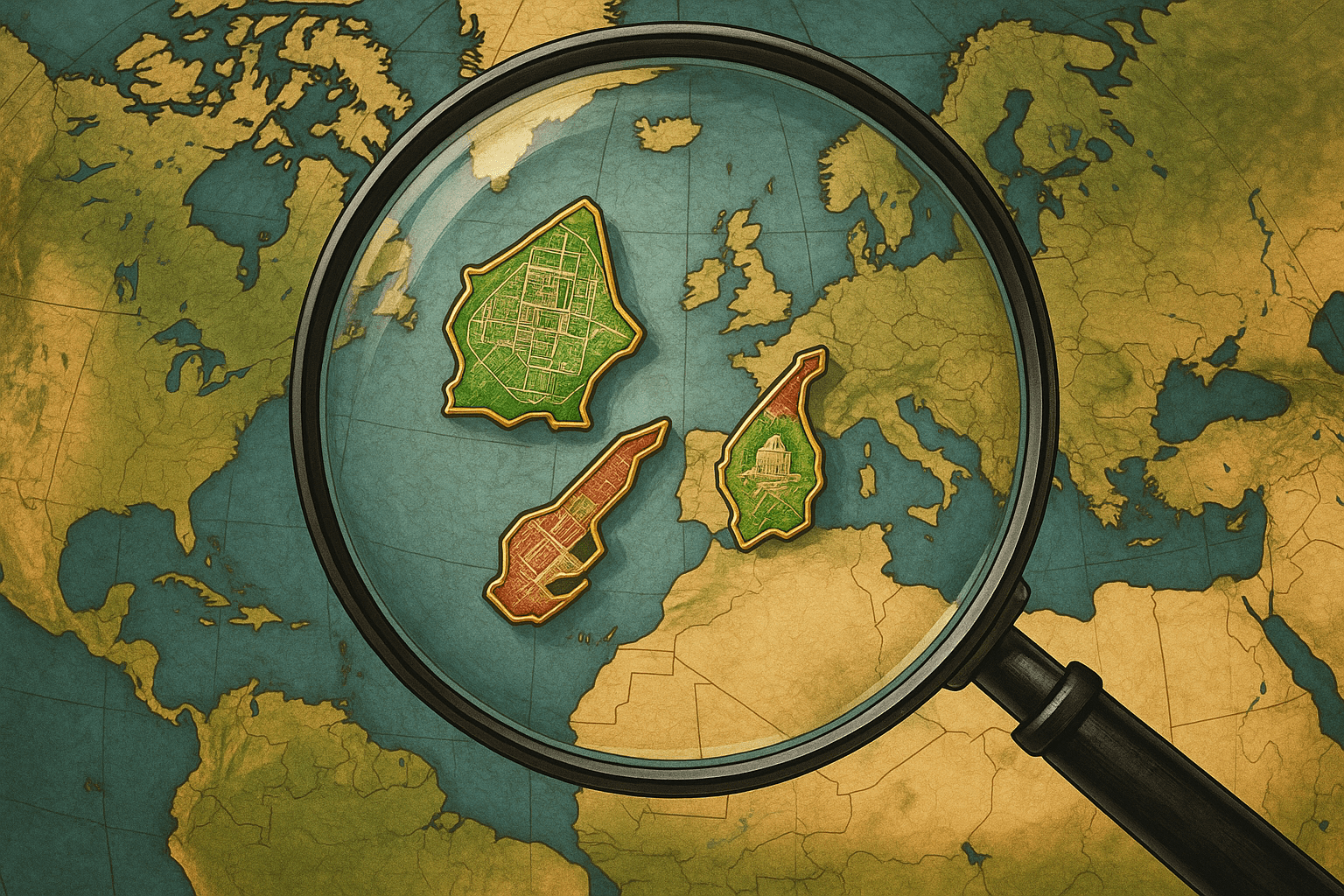A Papal Powerhouse: Vatican City
Our tour begins in the heart of Rome, Italy, where we find the world’s smallest sovereign state: Vatican City. Spanning a mere 0.44 square kilometers (110 acres), this walled enclave is a geographical and political anomaly. It’s not just small; it’s the only country in the world that is also a UNESCO World Heritage site in its entirety.
Physically, its geography is dominated by man-made marvels—St. Peter’s Basilica, with its magnificent dome, and the sprawling St. Peter’s Square. There are no forests, rivers, or mountains here; the landscape is architecture. From a human geography perspective, it’s equally unique. With a population of around 800 people, most of whom are clergy or members of the Swiss Guard, it has a zero birth rate. Its governance is an absolute theocratic monarchy, with the Pope as its head of state. Despite its diminutive size, the Vatican’s influence is colossal, serving as the spiritual and administrative headquarters for over 1.3 billion Roman Catholics worldwide.
The Glamourous Principality: Monaco
A short journey west along the Mediterranean coast takes us to our next stop: Monaco. Sandwiched on the French Riviera, Monaco is the second-smallest country at just over 2 square kilometers. What it lacks in size, it more than makes up for in population density and opulence.
Monaco’s physical geography is a dramatic cliffside perch overlooking the azure sea. Its rugged, hilly terrain has forced a unique geographical phenomenon: constant land reclamation. The country has literally expanded its own coastline by building into the sea, a testament to human engineering and economic might. This is the playground of the mega-rich, a tax haven where nearly one in three residents is a millionaire. Its economy thrives on high-end tourism, finance, and of course, the world-famous Monte Carlo Casino and the Monaco Grand Prix, a motorsport race that transforms the city’s narrow streets into a high-speed circuit.
An Island of Contrasts: Nauru
Let’s travel halfway across the globe to the Pacific Ocean to visit the world’s smallest island nation, Nauru. This single-island country covers 21 square kilometers and represents a powerful, cautionary tale in geography and economics.
Nauru is a raised coral atoll, a ring-shaped island with a unique interior plateau known as “Topside.” For much of the 20th century, this plateau was rich in phosphate deposits—the fossilized droppings of seabirds. Aggressive mining of this resource made Nauruans temporarily among the wealthiest people on Earth per capita. However, this came at a staggering environmental cost. Today, about 80% of the island’s interior is a barren, jagged moonscape, rendering it unusable for agriculture. This “resource curse” has left Nauru facing severe economic challenges and serves as a stark geographical lesson on the consequences of unsustainable exploitation.
The Frontline of Climate Change: Tuvalu
Nearby in Polynesia lies Tuvalu, the fourth-smallest nation in the world at 26 square kilometers. Comprising nine low-lying coral atolls, Tuvalu’s very existence is a dramatic geographical phenomenon.
The highest point in the entire country is a mere 4.6 meters (15 feet) above sea level. This precarious position makes Tuvalu exceptionally vulnerable to the effects of climate change and rising sea levels. High tides regularly flood homes and agricultural lands, a process known as coastal inundation. For Tuvaluans, climate change is not a distant threat but a daily reality. This existential threat has made Tuvalu a powerful and vital voice in international climate negotiations, pleading for global action to save their homeland. In a fascinating twist of modern geography, the nation derives significant income from an unlikely source: its internet domain name, .tv, which it leases to media companies worldwide.
The Serene Republic: San Marino
Our final stop takes us back to Europe, to another enclave nestled entirely within Italy. Welcome to San Marino, the fifth-smallest country in the world and, by its own claim, the world’s oldest surviving republic, founded in 301 AD.
San Marino’s geography is dominated by the majestic Monte Titano, a limestone outcrop crowned with three iconic towers. This dramatic landscape has been key to its survival, providing a near-impregnable fortress that helped the republic maintain its independence for over 1,700 years. Covering just 61 square kilometers, it is a living museum of history, governance, and resilience. Its human geography is defined by a fierce pride in its ancient democratic traditions and its enduring sovereignty against larger, more powerful neighbors.
More Than Just Specks on the Map
What can we learn from this whirlwind tour? These tiny nations demonstrate that size is no barrier to global significance. They find clever ways to thrive, carving out a niche on the world stage.
- Economic Specialization: From Monaco’s finance and luxury tourism to Tuvalu’s creative use of its .tv domain, microstates must innovate to survive.
- Diplomatic Amplification: They often use their platform at the United Nations to become powerful advocates for specific issues, like Tuvalu and climate change or the Vatican on humanitarian causes.
- Geographical Identity: Their physical geography directly shapes their culture, economy, and challenges—whether it’s Monaco building into the sea or San Marino defending its mountain fortress.
So the next time you look at a world map, take a moment to find these small but mighty nations. They are a powerful reminder that in the grand, complex geography of our planet, even the smallest places have a massive story to tell.
